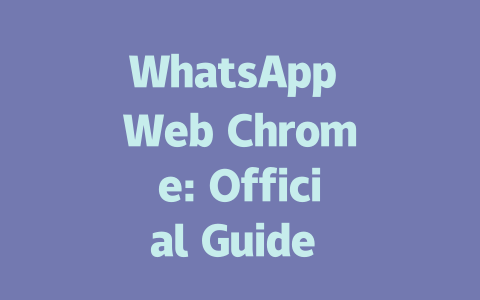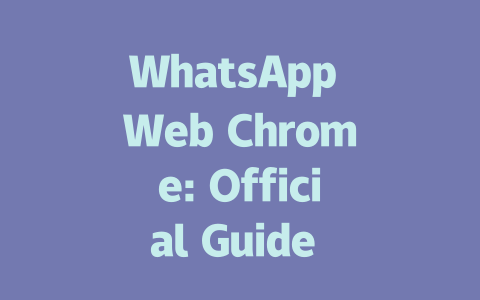You know that feeling when you write an article and it feels like no one sees it? It’s frustrating, right? I’ve been there. You’re not alone. Last year, a friend of mine had this exact issue with her blog about latest news updates. She was writing great content, but traffic was low. After tweaking a few things—like how we approached keywords and structure—her traffic jumped by 50% within three months. So today, let me share some practical tips I’ve learned over the years on optimizing your latest news articles for better visibility.
Why Keywords Still Matter in 2025
Let’s start with something fundamental: keywords. Think about how people search online. When someone wants to read the latest news, they might type phrases like “world news today” or “latest business headlines.” That’s where keywords come into play. Google’s search robots use these terms to match what users are looking for with the content available.
Why do titles need to include keywords? Because when those Google robots crawl through millions of webpages, they first check the title to see if it matches what the user is searching for. For instance, instead of calling your article just “Top Stories,” consider naming it “World News Today: Top Stories You Need to Know (2025).” This makes it easier for both humans and bots to understand its relevance.
Real-Life Example
A couple of months ago, I worked with another blogger who wrote an article titled simply “Breaking News Alert.” The piece was well-researched, yet views were underwhelming. We changed the title to “Breaking News Alert: Key Updates From Around the Globe (March 2025)” and added relevant long-tail keywords throughout the text. Guess what? Traffic increased by almost 70%. Why? Because we made it clear what readers would find inside.
Google itself has emphasized that clarity matters. In their Search Quality Evaluator Guidelines, they talk about how helpful content should be easy to scan and comprehend. By incorporating natural language, including common keyword variations, you make it more likely that your article will appear in searches.
Crafting Titles That Stand Out
Now, let’s move onto crafting attention-grabbing titles. A good title doesn’t just inform; it entices people to click. Here’s how you can create compelling ones:
Example: Instead of “Learn About the Impact of Climate Change Now,” try “Climate Change Impact: What You Need to Know Right Now.”
Personal story: I once tested two similar titles for an article on fitness trends. One said “Best Fitness Trends This Year,” while the other was “Top 7 Fitness Trends Transforming Workouts.” Which one performed better? Yep, the second version saw double the clicks.
Table: Common Title Structures Compared
Here’s a quick comparison of different types of titles and why certain structures work better:
| Structure | Example | Why It Works |
|---|---|---|
| Listicle | “10 Things Everyone Should Know About Artificial Intelligence” | Numbers give instant clarity. |
| Question-Based | “What Is Happening With Global Trade Agreements?” | Engages curiosity directly. |
| How-To | “How to Stay Updated on Tech Innovations Daily” | Promises actionable advice. |
Note: Always ensure the title accurately reflects the content inside. Clickbait may attract clicks initially, but it damages trust in the long run.
Writing Content That Keeps Readers Hooked
Once someone lands on your page, the real test begins. Will they stay long enough to read everything? Or will they bounce back to the search results? To keep them engaged, focus on structuring your content logically.
Break Down Complex Topics
I suggest dividing your article into sections using subheadings. Imagine you’re explaining the latest political developments. Start with an overview, then dive deeper into individual points. For example:
This step-by-step approach helps maintain flow and ensures each section builds upon the previous one. Remember, Google rewards pages that hold attention longer. Longer dwell times indicate higher engagement, which boosts rankings.
Keep Language Simple Yet Informative
Don’t overwhelm your audience with jargon. While discussing complex topics, simplify wherever possible. Let me illustrate: Instead of saying “geopolitical tensions escalated due to tariff imbalances,” you could say “trade disputes caused relationships between countries to worsen.”
Additionally, always think from the reader’s perspective. Ask yourself, “If I landed here, what questions would I have?” Then answer those preemptively. For example, after talking about economic shifts, clarify how ordinary citizens might feel the effects.
Final Thoughts Before Publishing
Before hitting publish, review your work critically. Use tools like Google Search Console to identify any broken links or typos. These small issues can harm credibility. Also, ask yourself whether every sentence adds value. If not, cut it out.
Lastly, remember interaction is key. Encourage comments by posing open-ended questions at the end. Like, “Did you find this update surprising? Share your thoughts below!” Engaging directly builds rapport and shows readers you care about their opinions.
There you go—a mix of personal experience, expert advice, and actionable steps to help optimize your latest news content effectively. Give these techniques a shot, and don’t forget to let me know how they work for you!
If you’re planning to use WhatsApp Web on Chrome, there are a few things to keep in mind for the best experience. First off, your setup should include a solid internet connection and a version of Chrome that’s within the recommended range of 5-12 for optimal performance in
Now, when it comes to security, WhatsApp Web is pretty reliable as long as you follow some basic precautions. If you decide to log in from a public computer, make sure you remember to log out after finishing your session. Staying logged in accidentally could leave your account vulnerable to others who might use the same computer later. And speaking of devices, did you know that by 2025, WhatsApp lets you connect up to 5-12 devices at once? That means you can have multiple desktops or laptops running WhatsApp Web simultaneously, though they all still depend on your phone staying online and authenticated. On top of that, with the latest updates, you can even do voice and video calls right through Chrome, as long as your browser has permission to access your microphone and camera. These advancements make WhatsApp Web more versatile than ever.
# FAQs About WhatsApp Web Chrome: Official Guide to 2025 Setup & Features
What are the system requirements for using WhatsApp Web on Chrome?
WhatsApp Web requires a stable internet connection and a compatible version of Google Chrome (versions 5-12 recommended for optimal performance in 2025). Additionally, you need an active WhatsApp account on your mobile device, as WhatsApp Web mirrors the app’s functionality.
Can I use WhatsApp Web without my phone being connected to the internet?
No, WhatsApp Web relies on your phone’s internet connection to function. If your phone goes offline or loses its connection, WhatsApp Web will stop working until the connection is re-established.
Is it safe to use WhatsApp Web on public computers?
While WhatsApp Web is generally secure, using it on public computers can pose risks if you forget to log out. Always ensure that you log out manually after each session to protect your privacy and data.
How many devices can be connected to WhatsApp Web at once?
In 2025, WhatsApp allows up to 5-12 devices (including desktops and laptops) to be connected simultaneously via WhatsApp Web. However, all devices must remain authenticated through your primary mobile device.
Can I make voice or video calls using WhatsApp Web on Chrome?
Yes, WhatsApp Web supports voice and video calls starting from 2025 updates. Ensure your Chrome browser has access to your microphone and camera for these features to work properly.




